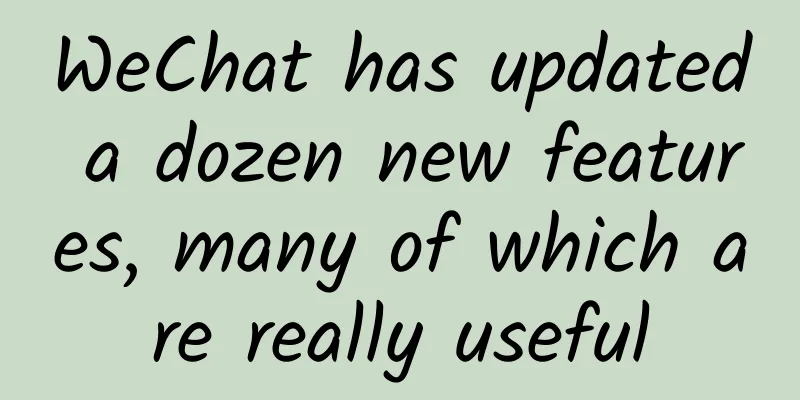Where does "the combination of ritual and law" come from? These codes and instruments give you the answer

|
Where did the idea of “applying both rites and laws” come from? How do ancient handicraft products “trace their origins”? The legal codes and instruments in the museum of Henan University of Finance and Economics will take you to explore the origin and development of Chinese legal civilization. Where does the concept of “applying both etiquette and law” come from? The Henan University of Finance and Economics Museum is located on the basement floor of the first teaching building on campus. At the entrance of the museum, 56 ways of writing the eight characters "ritual, law, virtue, China, country, rich, real, money" are displayed to tell visitors the theme of the museum. "The combination of rites and laws" is a legal concept and specific practice rooted in the minds of the Chinese people, and is also an important feature of the Chinese legal system. Jia Guotao, director of the Henan University of Finance and Economics Museum, said: "Legal codes and instruments are the core and characteristics of this museum, and the collection also conforms to the characteristics of 'the combination of rites and laws'." At the entrance to the museum, there are blue and white "Family Instructions of Zhu Xi" general jar, bronze Xiezhi, and torture shackles on display. These three collections are of different categories and have different symbolic meanings, and they have a profound impact on the origin and development of China's legal civilization. Collection of the Codex and Instruments Museum - Bronze Xiezhi First of all, the museum has a Qing Dynasty bronze Xiezhi. Xiezhi (xiè zhì), also known as "Xiezhi (zhì)", "Zhibian Beast" or "Law Beast", is a mythical beast in ancient Chinese mythology and legends. The big one is like a cow, the small one is like a sheep, similar to the Qilin, with bright eyes and usually a horn on the forehead. Xiezhi has high intelligence, understands human words and human nature, and can distinguish right from wrong. It is a symbol of "uprightness", "fairness" and "bright world" of justice. The importance of Xiezhi can also be seen from the composition of the Chinese character "法" - "法" was written as "灋" in ancient times, which can be split into "水", "廌" and "去". The "廌" here is Xiezhi. "Shuowen Jiezi" has the following interpretation: "灋, punishment. It is as flat as water, so it is composed of "水"; "廌" is used to touch those who are not straight, so it is composed of "去". This not only points out the relationship between Xiezhi and law, but also points out Xiezhi's insight to distinguish good from evil, loyalty from treachery, and right from wrong. "Xiezhi appeared on the clothing of ancient judges during the Spring and Autumn Period and the Warring States Period. Now we can also see that the sculptures placed on both sides of the court entrance are also Xiezhi, symbolizing the fairness and justice of the judiciary." Jia Guotao said. Collection of the Codex and Instruments Museum - Blue and White "Zhu Zi Family Instructions" General Jar "Zhu Zi Jia Xun", also known as "Zhu Bolu's Maxims for Managing the Family", is an enlightenment textbook with family ethics as its main content. The full text has 524 words, which brilliantly explains the way to cultivate oneself and manage the family. It puts forward such ideas as "Every porridge and every meal should be appreciated as it is not easy to come by; every piece of silk and every thread should be remembered as the difficulty of material resources" and "Do not rely on power to bully the orphans and widows, and do not kill animals for greed". Jia Guotao said: "Chinese law advocates the idea and value of unity of man and nature, ethical affection, and "Zhu Zi Jia Xun" takes "cultivating oneself" and "managing the family" as its purpose. From the perspective of the family, it educates individuals on how to behave themselves, and also reminds future generations that if the family is well managed, the society can be harmonious and stable." Collection of the Codex and Instruments Museum - Shackles Another collection in the museum is a torture instrument, shackles, which were originally made of wood. When excavating the ruins of the Shang Dynasty, pottery figurines wearing handcuffs were unearthed, which symbolize the severity and inviolability of criminal law. Jia Guotao introduced that in ancient my country, the most important "tools for governing the country" were etiquette and law (punishment). Morality and etiquette are more of the "good" of people's hearts from the inside out, while punishment is the necessary "evil" born for "doing good and eliminating evil". These three artifacts in the museum represent the essence of traditional Chinese law, which is based on morality and etiquette, supplemented by law, politics and punishment, to a certain extent, highlighting the ideological and value concepts of Chinese legal culture, "morality as the main and punishment as the auxiliary", "etiquette and law", "harmony between man and nature", and "ethical affection". Collection of the Legal Code and Instruments Museum - Commentary on Tang Law The museum also houses the Tang Code Commentary, which was printed in the 16th year of the reign of Emperor Guangxu of the Qing Dynasty. It is called the "king of ancient Chinese legal codes" by later scholars. Its content is based on the Confucian idea of human nature, and it implements the Confucian idea of human nature in the legislative idea of "virtue is the main thing, and punishment is the auxiliary thing", advocating virtue and etiquette as the main thing, and punishment as the auxiliary thing. The Tang Code Commentary has played a huge role in promoting the development of Chinese legal history and is one of the important cornerstones of the Chinese legal system. Codex and Instruments Museum How did people in ancient times ensure the quality and safety of products? Jia Guotao pointed to a pottery jar and said, "There are two characters engraved on its body - Shanyang, which is the name of the craftsman who made the pottery jar at that time. The purpose is to facilitate managers to inspect product quality. If the quality inspection fails to meet the standards, the craftsman will be punished accordingly. This system is called 'marking the name of the craftsman on the object'." "Marking the name of the craftsman on the object is to test his sincerity. If he does not do his job properly, he will be punished." The handicraft management system of "marking the name of the craftsman on the object" in ancient my country has a long history. As early as the Shang and Zhou dynasties, there was a phenomenon of engraving people's names on bronze ware, but at that time it was mostly to indicate the owner of the object. The situation of engraving the name of the manufacturer on the object appeared in the Spring and Autumn Period and the Warring States Period. Marking the name of the craftsman on the object played an important role in ensuring the quality of products or projects, and it was also the "predecessor" of the current trademark legal system. Jia Guotao said: "The Legal Code and Instruments Museum is a microcosm of the professional characteristics of financial and political science schools. At present, the museum exhibits a total of 830 documents (528 sets), including 355 books, as well as contracts, bills and related notices during the New Democratic Revolution, stamp tax stamps during the Republic of China period, and Song Dynasty monograms, which comprehensively display the entire process of the origin, formation, development, maturity and transformation of China's legal civilization." The museum has a rich collection of ceramics, coins and intangible cultural heritage. The Henan University of Finance and Economics Museum covers a total area of 3,500 square meters. Since it was officially opened to the public in 2020, it has received nearly 30,000 visitors. The museum has rich collections. In addition to the Code and Instruments Hall, it also has a Ceramics Hall, a Coin Hall and an Intangible Cultural Heritage Hall. There are 377 pieces of ancient ceramics in the Ceramics Museum, some of which are exquisite and unique, exquisite and translucent, some are white as jade and delicate as silk, covering early pottery, Changsha kiln, Cizhou kiln, export porcelain, etc. One of them is a blue and white five-color gourd bottle from the Ming Dynasty. The bottle body is made of blue and white five-color, with bright colors, fine painting, and various elaborate patterns. The flowers on the bottle body are blooming, the leaves are stretched, and the flying cranes are lifelike, constructing a beautiful picture of harmony and nature. The upper layer of the gourd is written with "good weather and good harvest", and the lower layer is written with "peace and prosperity", which means a peaceful and prosperous era and a peaceful family and country. Ceramics Museum Collection - Blue and White Multicolored Gourd Bottle (middle) "The roads for agricultural and industrial transactions were open, and the currencies of tortoise shells, shells, gold, silver, knives and cloth flourished." The Coin Museum displays coins from the pre-Qin period to modern and new China, with a total of 875 pieces. Among them are the key-shaped "One Knife Worth Five Thousand" coin and the red coin issued by the Soviet government in 1934. The Intangible Cultural Heritage Museum displays objects and pictures of 125 national intangible cultural heritage items in Henan Province, including oral traditions, music and dance, handicrafts, and festival customs, which reproduce the long history and splendid culture of the Chinese nation. The museum also has an interactive experience area for visitors to experience the charm of traditional culture firsthand. Attract more people to visit museums and experience the charm of culture The Henan University of Finance and Economics Museum became one of the important units of the National University Museum Education Alliance in December 2021, and became a science popularization demonstration base of the Zhengzhou Federation of Social Sciences in September 2023. Jia Guotao said that school museums are an important supplement to school theoretical education. They can provide a more intuitive and vivid way of education, help students better understand history and culture, cultivate interests, increase their knowledge, and improve their aesthetic abilities and humanistic qualities. Coin Museum The Henan University of Finance and Economics Museum provides a new platform for academic exchanges. The collections in the museum have become the objects of academic research for students and teachers. Both teachers and students can gain a deeper understanding of academic frontiers and development trends, and expand their academic horizons and research fields. In the future, the museum will continue to play its unique educational role, with rich collections, professional explanations and various activities, to attract more teachers, students and the public to visit the museum, feel the charm of culture and enhance cultural confidence. At the same time, it will continue to enrich the collection, contribute to the inheritance and promotion of China's excellent traditional culture, enhance the school's cultural soft power, and promote cultural prosperity and development. |
<<: Which is more hygienic, drying clothes in the sun or drying them in a tumble dryer?
Recommend
How much does it cost to develop a Meizhou textile and leather mini program? Meizhou Textile Leather Mini Program Development Price Inquiry
In order to better penetrate into various industr...
How can back-end developers feel? Salaries of front-end programmers exposed
Recently, a programmer who has worked in the back...
Mid-Autumn Festival shock: Chang'e is actually a toad spirit?
The moon palace must have a special feeling, ever...
24 sets of mobile photography courses collection
24 sets of mobile photography series course colle...
What kind of garden is the modern rain garden?
Modern rain gardens were formed in the 1990s and ...
Operation skills and monetization methods of B station film and television accounts!
It is very easy to be an up master on Bilibili. A...
This old friend was born in the polar day and I meet him every winter.
Many years later, in the winter, facing the whoop...
BlackBerry QNX enters the field of autonomous driving and this time it really steps on the gas
Canada's BlackBerry will open a self-driving ...
How to do brand marketing on “World Book Day”, Durex’s book list shines!
Yesterday was World Book Day . What books are you...
So the question is: Among WeChat, Weibo, and Tieba, which fan economy platform is the best?
Double Eleven has not yet arrived, but the "...
Ten reasons why How-Old became popular
The How-Old website developed by Microsoft has re...
iOS 9 new features revealed, artificial intelligence becomes another highlight
According to the US technology blog 9to5Mac, sour...
Former senior operator of Xiaomi: After three years at Xiaomi, I summarized the four most important experiences in user operations
User operation is a very important part of the op...
Growth hacking in action: a complete case study to explain the core operation methods
The concept of growth hacking has been very popul...
If your iPhone is seriously draining power, you might as well try turning off these features
Mobile phones are one of the most important tools...









